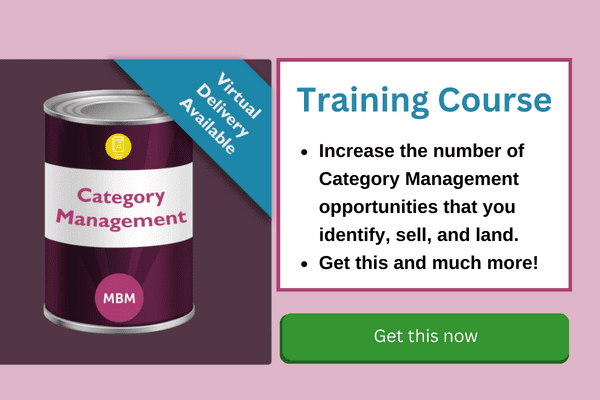Are You Using Your Distribution Channels to Best Effect? Understand Them, and Make Them Work for You
Distribution channel strategy, AKA strategy for using the different distribution channels, is an area requiring considerable oversight and development, irrespective of whether you run a large enterprise or a small business.
Unfortunately, a lot of business owners end up putting this important area to the back of their minds. Instead, they focus on the likes of new product development, and social media engagement. Nevertheless, you can stimulate business growth and significantly enhance your profits, armed with a clear strategy to make your distribution channels work better for you.
So, we’ll look in a moment at 5 effective ways to improve your distribution channel strategy. But first, here’s a quick recap on distribution channels and strategies.
What is a Channel of Distribution in Marketing?
It’s the network of businesses or intermediaries through which a product reaches the final customer or consumer.
What are the 4 Types of Strategies?

1. Direct:
The manufacturer gets orders and supplies their products directly to the customer. As well as giving you insights into your consumers and target audience, this can also result in higher profit margins, because there are no intermediaries involved.
Direct Distribution: Advantages and Disadvantages
You control the customer experience and get the product there quicker. However, direct distribution doesn’t work so well when you need to get mass-produced, short life or low-cost items to the consumer quickly.
Sticky Learning ® is 7 times more effective than 1-day training courses. Plus, you will get a Chain of Evidence proving your Return on Investment. Discover soft skills training that changes behaviours long term.

2. Indirect:
You work with intermediaries to distribute your products.
Indirect distribution subdivides into:
3. Intensive:
This involves placing your products in as many retail locations as possible, directly or through distributors. In practice, it’s really only applicable to everyday, inexpensive products that customers purchase routinely.
4. Selective:
Here, you distribute your products through one, or more than one, retailer. Either way, you’re selective about which ones you want to work with because it affects how consumers will perceive your product.
People also talk about a second kind of selective distribution:
5. Exclusive:
Exclusive distribution strategies involve selling products to one specific retailer, or through a single website or retail outlet that the manufacturer owns and controls.
While still on the Distribution Channel Strategy, check out the below:

What are the 4 Types of Channel?
Distribution channels include:
- Wholesalers
- Retailers
- Other distributors
- E-commerce websites (the internet)
Also, people talk about a fifth channel:
- Hybrid
This is a mix of the first four.
What are the Levels of Distribution Channels?
This is another term people use for the different intermediaries who move products from a manufacturer to the final customer:
- Zero-level channel, or direct marketing: There are no intermediaries between the producer and the end consumer.
- One-level channel: eg retail.
- Two-level channel: eg wholesale and retail.
- Three-level channel: eg sales agent, wholesaler, and retailer.
What is An Example of a Distribution Strategy?
Whichever channels you choose for your business at your stage of growth, you need to define your strategy and make sure it’s as efficient as possible, giving your product the best opportunity to be before your target customer. So, here are some examples:
- Direct: A clothing company sells directly to customers via an e-commerce platform. They sell their goods online and do their own warehousing and distribution.
- Intensive: A national or regional grocery company sells its products everywhere, through many channels.
- Selective: A high-end fashion brand wants its products in different channels and is choosy about where they are.
- Exclusive: A luxury car manufacturer picks just a few outlets, to create brand exclusivity.
How Does A Distribution Channel Strategy Work in Marketing?

Well, in a real-life example, a small food supplier sells online and through a distributor, delivering to local consumers and specialist retailers. They want to grow, but they’re uncomfortable with the volumes and conditions major supermarkets demand for regional listings.
A few years later, the supplier has grown into an established national brand. Operating at this scale, direct and selective distribution are now both workable, in a hybrid distribution strategy that supports their market positioning.
What is a Distribution Channel Strategy Example?
Here’s another one. The distribution channels for an electric toaster include the manufacturer making the toasters and handling their own direct sales, a distributor warehousing and shipping them to retailers, and stores and e-commerce platforms selling the toasters to the final customer.
5 Effective Ways to Improve Your Distribution Channel Strategy
As promised, here they are:
1. Pinpoint Your Required Distribution Channel Strategy, and Find the Right Partners
You need to find the right distribution channel strategy for your current business plans, to maximise the efficiency of your operations, and review it regularly. Remember, you can always change it. We’ll come back to this when we look at way number 5, create a channel management plan
Once you have your distribution partners in place, you need to have harmonious working relationships with them, as you’ll be working closely. Better supply chain management leads to better cooperation and greater effectiveness. So, be open with each other, and listen. Building strong partner relations like this will benefit everyone involved.
2. Use Distribution Management Software
Having the right tech is also essential. The first step is a location-driven distribution management tool. This will enable you to ensure your distribution efforts run effectively, using the software to track everything.
The benefits of implementing distribution management software include:
1- Reducing Your Expenses
Software like this helps you enjoy a better Return on Investment (ROI) by automating processes to reduce workloads and optimise your head counts.
2- Managing Distributor Claims
Your distribution management tool will enable you to take care of claims as they arise, such as returns from customers and defective products, so you maintain good working relationships with distributors and others.
3- Enjoying Effective Reporting
Distribution management tools come with a user-friendly dashboard that helps create, view, and download essential reports with ease. Generate charts and reports monthly, weekly, or daily, and use them for goal setting, forecasting, and improving operations and sales.
4- Making Returns and Deliveries Hassle-Free
Product delivery is the most critical step in the supply chain process. Continual coordination between retailers, distributors, warehouses, and sales departments is essential. A distributor management system (DMS) ensures you meet these requirements, with advanced features for scheduling returns and deliveries. This will reduce stock issues, boost customer satisfaction and loyalty, and increase goodwill with distribution partners.
5- Managing Your Inventory Accurately
Whatever the size of business, without a proper system inventory management can be a nightmare. Modern DMS systems make this a lot easier, reducing errors considerably so you don’t have to run out of inventory again.
6- Utilising Resources Effectively
One of the main benefits of implementing a powerful management system is that it will ensure you use your resources are used effectively. For instance, you can establish automatic ordering when your stock hits a certain threshold. This removes time-consuming and manual processes while enhancing accuracy.
3. Control Your Costs Effectively

Besides implementing a distribution management tool to lower your operating expenses, think about these other ways to reduce costs as well. The most successful businesses are always looking for ways to lower expenses without reducing quality:
- Track your performance: This helps you understand which steps in your current distribution process are the most powerful, and which need extra management. The total revenue at every point within the channel is a good indicator of which partners are strong assets and which should be delivering more productivity.
- Monitor regional sales and inventory: This data will help identify which geographical areas you should direct distribution towards. If you meticulously keep records, whenever your business is down, you can take the right steps. You will know which sales strategies were successful in the past, and which were less effective.
4. Streamline Your Product Movement
Whichever distribution strategy you decide to implement, it’s critical to streamline your product movement. Customer relations can be considerably damaged if you’re making deliveries late, or orders are incomplete.
In fact, statistics show that existing customers would be 69% less likely to buy again from a business if their item was more than two days late. So, to make sure inefficient distribution doesn’t result in you losing customers, here are three areas to consider:
- i. Deliver to parcel lockers.
- ii. Use direct vendor shipments.
- iii. Optimise your warehouses.
This will result in happier customers, quicker delivery speeds, and a more productive workforce.
So, let’s take a look at each of these suggestions in more detail:

i. Deliver to Parcel Lockers
One of the ways to streamline distribution is delivering all orders being shipped to the same area to one central location through parcel lockers. For instance, retailers can sell items on the Internet and get them picked up in-store. This is known as ‘BOPIS’ – buy online, pick-up in store.
You can streamline this process further, using retail parcel lockers. These are smart systems that store orders until they’re picked up by the purchaser.
So, here’s how parcel lockers work:
- A customer places an order online.
- Retailers or warehouses store the item in a secure retail parcel locker.
- The customer is notified via app, email, or text alert when it’s ready to pick up.
- They retrieve their package via the locker using a unique code at a date and time convenient for them.
ii. Use Direct Vendor Shipments
These are helpful if demand is unpredictable, and spans a broad area. In such instances, it is typically faster for vendors to bypass the warehouse processing stage, and go direct to potential customers and stores.
Although shipping costs are more expensive using this route, you will be spending less on the management or storage of your products.
iii. Optimise Your Warehouse
Optimising the efficiency of your warehouse so it can run impeccably, will stop delays in the delivery process.
Warehouses are fulfilment and distribution centres, where items are stored until retailer stock runs low or online orders are fulfilled. As warehouses typically focus on products in local areas, products can be disseminated easily to meet stable demands. Nevertheless, this will only be the case if you’re efficient in picking, packing, and shipping out the inventory at your warehouse.

To achieve an optimised warehouse, you need to make sure you are using the latest technology. You should also ensure that your workforce is energised and motivated and that your workstations are well-organised.
5. Create a Channel Management Plan

Our final piece of advice is to create a channel management plan. Channel partners are important, especially if they’re also your customers. You need to work together, to create a process that is smooth, effective, and delivers results.
To ensure your channel, our channels, is as successful as possible, put together a plan so that you can address key areas, and come back to them frequently.
Some Possible Elements to Include in Your Channel Management Plan:
i. Avoid Price Conflicts
First of all, you need to determine a strategy for pricing your products and stick to it. If channel conflicts come to the fore due to price, attempt to resolve them as soon as possible.
ii. Drive Revenue Through the Channel
You should also take ownership of the advertising campaigns and promotion plans that will generate revenue at all stages through your channels. After all, your partners need to concentrate on building their own consumer base, and not simply marketing your product. Remember, your solution isn’t the only one they offer.
iii. Communicate With the Channel
Now here’s another important point. You should create relationships at every step within the channel, and make this a priority. That’s because if you don’t speak with your partners, you can’t expect to identify potential issues and solve them.
iv. Develop Measurements and Track Performance
Furthermore, you need to know who your greatest performers are concerning sales at every point in your channel. Therefore, tracking total revenue, volume, and orders will help you identify who’s doing well and enhance the partners who are underperforming.
v. Make Channel Management a Priority
Lastly, it’s imperative to have sufficient resources for channel management. So, if your business can hire one, a dedicated channel manager can make a massive difference. In addition, this person should have the sole responsibility of relationship management and building marketing programs so that revenue can be driven through the channel.
Grow Your Business by Boosting Your Distribution Channel Strategy

So there you have it – five different ways that you can enhance your distribution efforts. All in all, if you understand the different channels, monitor your performance and that of your distribution partners, and follow the advice we have mentioned, you will notice positive improvements in this area of your business.
AND FINALLY: Sharpen The Saw!
Hopefully, you’ve found this article helpful. Here’s one more thought to leave you with. ‘Sharpen The Saw’ is Stephen R. Covey’s Habit #7 in his bestselling book, ‘The 7 Habits of Highly Effective People.’ After all, you’re continually seeking to improve in other areas of your business. So it’s vital to recognise that addressing your distribution channels is also something you constantly need to evaluate. That way, as circumstances change, you’ll ensure you’re getting the very best results from working with your distribution partners, whatever channel, or channels, you’re operating in. Good luck!
Updated: February 2024 by Charles Smith




